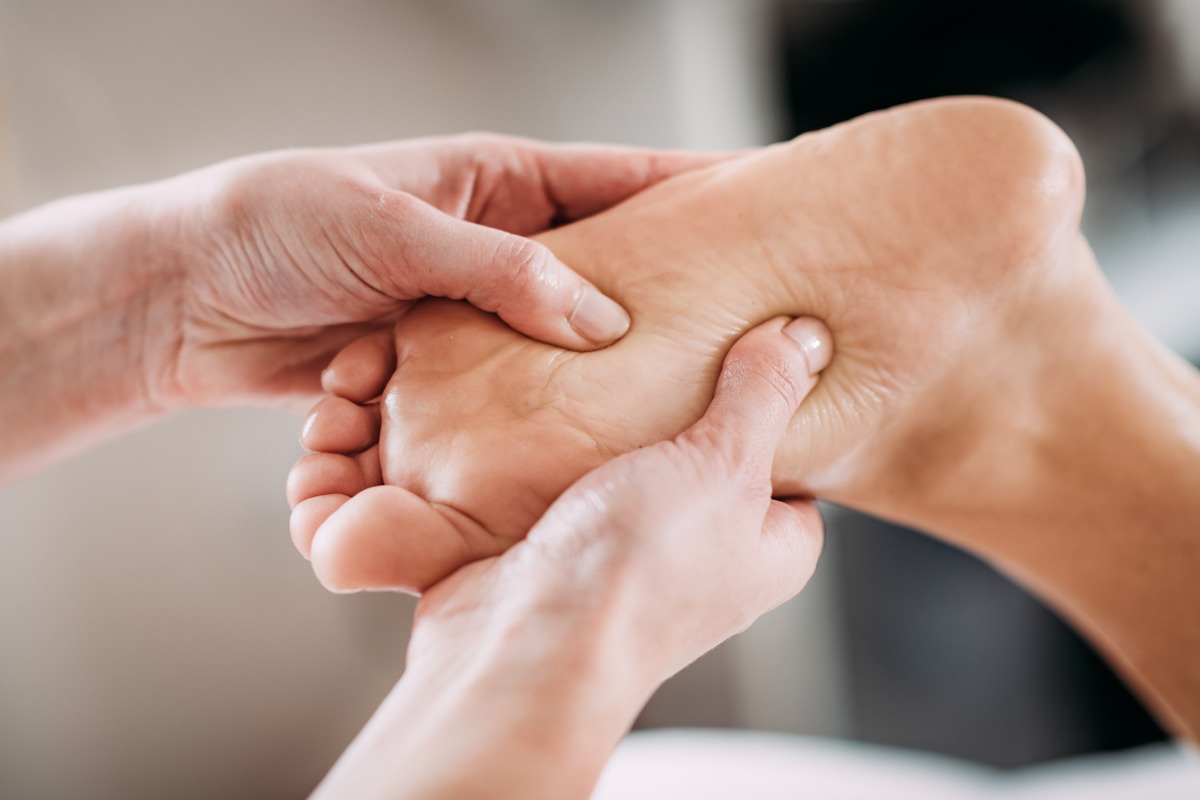High arch, also known as Cavus Foot, is a condition in which the foot has an abnormally high arch. This condition may be hereditary, or it may be the result of a neurological disorder or other medical condition.
If you are suffering from high arch pain and are seeking treatment, contact us today for a consultation.
About High Arch, AKA Cavus Foot
High arch is one of the most common foot disorders in the world, and it affects millions of people in the United States alone.
High arch is often genetic, especially for women. According to WebMD, 68% of women and 20% of men inherit high arches from their parents. Beyond genetics, a number of conditions can be the cause of high arches, including:
- Cerebral palsy
- Charcot-Marie-Tooth disease
- Spina bifida
- Polio
- Muscular dystrophy
- Stroke
So how do you know if your foot pain is from high arches? Beyond simply looking to notice the curvature of the arch, there are some pretty telltale signs experienced by people with high arch.
Symptoms of High Arch
Most commonly recognized by a noticeably high arch even when standing, some of the other symptoms of high arch include:
- Bent or clenched toes
- Calluses
- Frequent blisters
- Pain when standing or walking
Instability caused by the heel pointing inward, which can cause ankle sprains
Having high arches isn’t necessarily painful, but it can be difficult in certain situations. Wearing commercially made shoes or walking on your feet for long periods of time can make your feet feel tiresome or achy.
Best Shoes for High Arches
With high arches, you need to take extra care to find shoes with the proper arch support. Flat or flimsy shoes rarely offer the right arch support to keep your feet stable and comfortable throughout the day.
Look for shoes with good side-to-side stability, such as high-top shoes and shoes with a short, wide heel. It is best to avoid high-heeled shoes over two inches to keep your foot adequately stable. If your shoes still don’t offer enough support, you can have insoles custom made to fit the specific arch of your feet.

Professional Diagnosis
If you believe that you or someone you know might be suffering from a high arch, please consult a foot orthotics professional. The doctor will then conduct a variety of tests, including but not limited to:
- A review of family history
- A review of medical history
- In-depth foot examination (looking for calluses, blisters, irregularity in structure)
- Observation of walking pattern & coordination
- Analysis of the wear pattern on patient’s shoes
- X-Rays

Treatment for High Arch
Surgical Option
There are some severe cases of high arch that require surgical treatment. It is also quite possible that subsequent future surgeries would be needed in order to assure pain-free, stable movement.
Non-Surgical Option
More commonly, a less-severe case of high arch can be addressed by a chiropractor and foot orthotics. Orthotics realign the feet and ankles and restore deficient foot function. It is often that people place more weight on one side or the other. Orthotics are a great treatment for enabling weight distribution, taking pressure off the sore spot at the heels, balls of the feet, between toes, at the bunions, and soles of the feet.
Along with foot orthotics, massage therapy and typical adjustments, some things a chiropractor might prescribe are:
- Orthotic devices – Custom orthotic devices that fit into your shoe provide stability and cushioning to the foot, which lessens the effect of high arch.
- Shoe modifications – Wider-heeled shoes can improve stability and high-top shoes can add support for the ankle.
- Bracing – Bracing is useful in managing foot drop, and can also assist with keeping the foot and ankle stable.
If you’re experiencing foot pain and have been unable to relieve it yourself, it is a good idea to contact Dr. Reinhardt to relieve specialized orthotics and foot treatment.
Recent Post
Managing Stress and Tension: How Chiropractic Care Can Help
July 1, 2024
In our fast-paced world, stress and tension have become ever-present. Whether it’s the demands of work, family responsibilities, or the challenges of everyday life, many of us are constantly battling stress. At Reinhardt Chiropractic, we believe in a holistic approach to health that addresses not only physical pain but also the underlying stress that can
Read More…
Understanding the Benefits of Chiropractic Care for Athletes: Enhancing Performance and Preventing Injuries
June 1, 2024
In the world of sports, athletes are always seeking ways to improve their performance and prevent injuries. One often overlooked yet highly effective method is chiropractic care. At Reinhardt Chiropractic, we understand the unique demands placed on athletes and how chiropractic care can be a game-changer in their training and recovery regimes. Enhancing Performance Improved
Read More…

